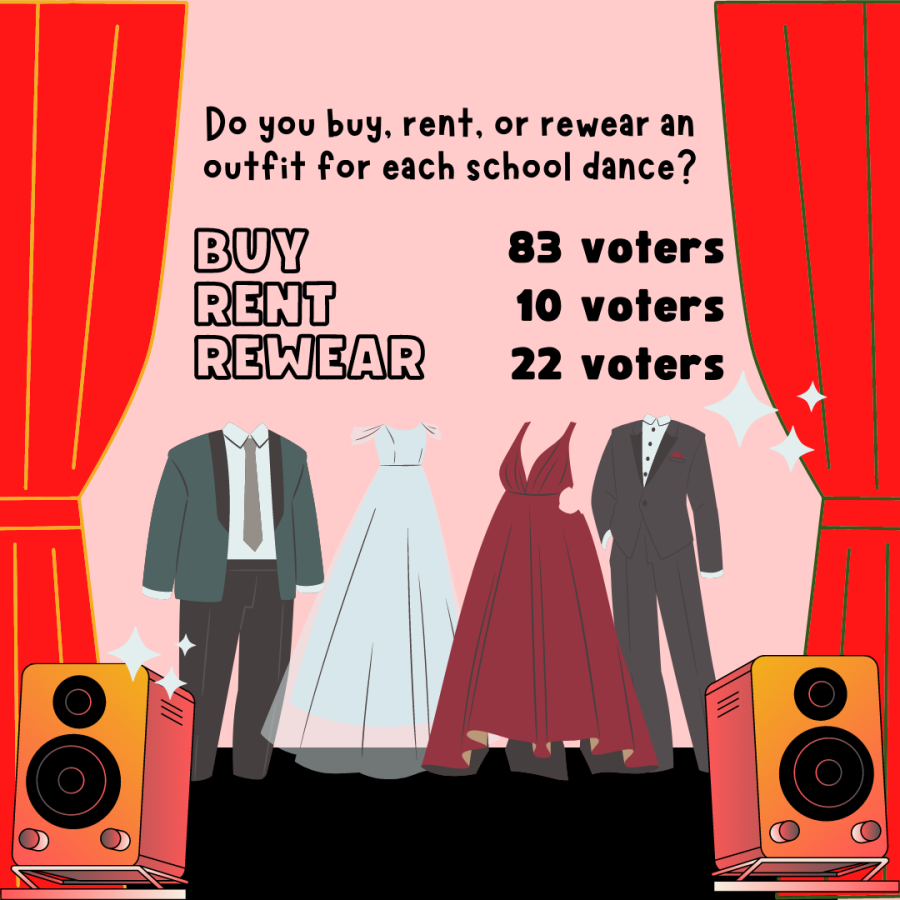New formal attire isn’t worth environmental impact
April 11, 2022
Prom is in a little over a week, and with that comes the demand for a new outfit to wear. Whether that be a cocktail dress, a halter dress, a three-piece suit, or donning a corset, high school dances see a wide variety of outfits, many of them brand new.
While wearing a new outfit for this event may seem exciting, it’s contributing to environmental problems that aren’t worth the shiny or sleek look for one night. The Mentor Editorial Board believes students should reduce reliance on fast fashion and contribution to the environmental impact of buying new outfits and to start trading or renting formal attire.
The fashion industry is one of the most polluting industries in the world. This is especially fast fashion, the apparel-making method that produces inexpensive clothing rapidly in response to the latest style trends. Companies that practice fast fashion sacrifice both the efficacy of their materials and the sustainability of their making methods in order to capitalize on a quick-to-change industry that heavily relies on trends.
That one outfit someone has lying in the back of their closet they wore once contributed to harmful gas emissions. Fast fashion is responsible for producing 10% of the global carbon emissions and is the second-largest consumer of the global water supply. The environment suffers from fast fashion, and there aren’t many signs of it slowing down.
It’s centered around consumerism, which encourages the purchase of goods, promoting that it is economically desirable. People buy tons of items, typically clothes, and discard them at higher rates than they buy, resulting in landfills. There are piles of discarded clothes that people threw away, growing each year. Over three million tons are incinerated, and a staggering 10 million tons get sent to landfills. These have severe effects on the climate and continue to grow in impact the more people buy and demand.
Buying new outfits doesn’t have to be in such high demand. High school popularity and social status have an impact on the overall demand. High school students are particularly susceptible to social and peer pressure to the status that new or trendy clothing can contribute to.
The truth is it doesn’t matter as much as it is made out to be. Nobody is going to remember if someone wore the same outfit to Prom as they did Homecoming. Cocktail dresses are one of the most common types of dresses that can be used for multiple occasions, expanding beyond high school dances. Creating new combinations by reusing outfits is a good first step in reducing the impact a person has on fast fashion and lowering the contribution to consumerism.
A less-used route is renting. There are companies that rent out tuxedos and dresses for formal events that students could use for high school dances instead of going out and buying a new one. A student can rent the outfit for the night and return it, especially if they want a more luxurious or extravagant outfit that they know will only be worn once.
Trading is also a possibility. While it may seem like a groaner to high school students, Facebook Marketplace is quite popular when it comes to selling/trading outfits that someone wants to get rid of. Some moms have started a group where they trade outfits with each other for their children for future dances and events. Trading outfits reduces the demand for buying brand new ones and allows people to get rid of clothes without having to throw them away and for them to end up in landfills.
It needs to be said that the older generations have screwed up the climate for the younger generation. As the younger generation goes about considering taking action in relation to the climate, it’s important to remember that a lot of it is connected to consumerism. This needs to be the generation that breaks the consumerism cycle that has been causing the issue. The climate problems are spiraling out of control, and change has to start somewhere.


